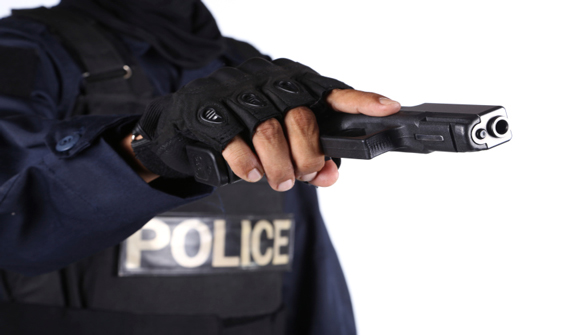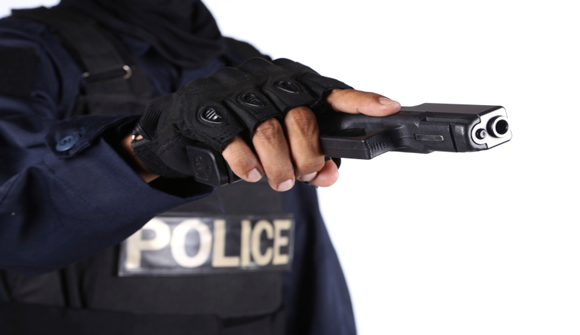STAFF NEWS & ANALYSIS
Think Twice Before Calling the Cops: The Deadly Cost of Police Welfare Checks
By John and Nisha Whitehead – October 19, 2022
Think twice before you call the cops to carry out a welfare check on a loved one.
Especially if you value that person’s life.
Particularly if that person is disabled, mentally ill, elderly, autistic, hearing impaired, suffering from dementia, or might have a condition that hinders their ability to understand, communicate or immediately comply with an order.
According to an investigation by The Washington Post, cops sent out on welfare checks ended up shooting or killing the very people they were supposed to assist in at least 178 cases over the course of three years.
Atatiana Jefferson was neither disabled, mentally ill, elderly, autistic, hearing impaired, suffering from dementia. The 28-year-old Fort Worth resident was merely awake at 2:30 am, playing video games with her 8-year-old nephew in a house with its lights on and the front door open.
A neighbor, noticing the lights and open door, asked police to do a welfare check on the household. Instead of announcing themselves at the front door, police crept quietly around the house. Hearing noises outside, Jefferson approached her bedroom window to investigate.
Seeing Jefferson through the window, police yelled, “Put your hands up! Show me your hands!” Within seconds of issuing that order and without identifying themselves, police fired a single shot. Jefferson died on the scene.
Atatiana Jefferson’s death is yet one more grim statistic to add to that growing list of Americans—unarmed, impaired or experiencing a mental health crisis—who have been killed by police trained in the worst-case scenario and thus ready to shoot first and ask questions later.
The officer who fired the shot claimed he did so because he perceived “a threat.”
Be warned: to the armed agents of the America police state, we are all potential threats.
At a time when growing numbers of unarmed people have been shot and killed for just standing a certain way, or moving a certain way, or holding something—anything—that police could misinterpret to be a gun, or igniting some trigger-centric fear in a police officer’s mind that has nothing to do with an actual threat to their safety, even the most benign encounters with police can have fatal consequences.
For those undergoing a mental health crisis or with special needs whose disabilities may not be immediately apparent, the dangers posed by these so-called wellness checks are even greater.
For example, Gay Plack, a 57-year-old Virginia woman with bipolar disorder, was killed after two police officers—sent to do a welfare check on her—entered her home uninvited, wandered through the house shouting her name, kicked open her locked bedroom door, discovered the terrified woman hiding in a dark bathroom and wielding a small axe, and four seconds later, shot her in the stomach.
Four seconds.
That’s all the time it took for the two police officers assigned to check on Plack to decide to use lethal force against her (both cops opened fire on the woman), rather than using non-lethal options (one cop had a Taser, which he made no attempt to use) or attempting to de-escalate the situation. The police chief defended his officers’ actions, claiming they had “no other option” but to shoot the 5 foot 4 inch woman with carpal tunnel syndrome.
This is what happens when you indoctrinate the police into believing that their lives and their safety are paramount to anyone else’s: suddenly, everyone and everything else is a threat that must be neutralized or eliminated.
In light of the government’s ongoing efforts to predict who might pose a threat to public safety based on mental health sensor data, encounters with the police could get even more deadly for those with a mental illness or disability.
As Steve Silberman writes for The New York Times “Anyone who cares for someone with a developmental disability, as well as for disabled people themselves [lives] every day in fear that their behavior will be misconstrued as suspicious, intoxicated or hostile by law enforcement.”
Indeed, disabled individuals make up a third to half of all people killed by law enforcement officers. People of color are three times more likely to be killed by police than their white counterparts. If you’re black and disabled, you’re even more vulnerable.
Over the course of six months, police shot and killed someone who was in mental crisis every 36 hours.
Among 124 police killings in which mental illness appeared to be a factor, The Washington Post noted some important distinctions:
“This group was more likely to wield a weapon less lethal than a firearm. Six had toy guns; 3 in 10 carried a blade, such as a knife or a machete — weapons that rarely prove deadly to police officers. According to data maintained by the FBI and other organizations, only three officers have been killed with an edged weapon in the past decade. Nearly a dozen of the mentally distraught people killed were military veterans, many of them suffering from post-traumatic stress disorder as a result of their service, according to police or family members… And in 45 cases, police were called to help someone get medical treatment, or after the person had tried and failed to get treatment on his own.”
The U.S. Supreme Court, as might be expected, has thus far continued to immunize police against charges of wrongdoing when it comes to use of force against those with a mental illness.
Where does this leave us?
For starters, we need better police training across the board, but especially when it comes to de-escalation tactics and crisis intervention.
A study by the National Institute of Mental Health found that Crisis Intervention Team-trained officers made fewer arrests, used less force, and connected more people with mental-health services than their non-trained peers.
Second, police need to learn how to slow confrontations down, instead of ramping up the tension (and the noise).
Third, with all the questionable funds flowing to police departments these days, why not use some of those funds to establish what one disability-rights activist describes as “a 911-type number dedicated to handling mental-health emergencies, with community crisis-response teams at the ready rather than police officers.”
In the end, while we need to make encounters with police officers safer for people with suffering from mental illness or with disabilities, what we really need—as I point out in my book Battlefield America: The War on the American People and in its fictional counterpart The Erik Blair Diaries—is to make encounters with police safer for all individuals all across the board.

Source: The Daily Bell Rephrased By: InfoArmed

